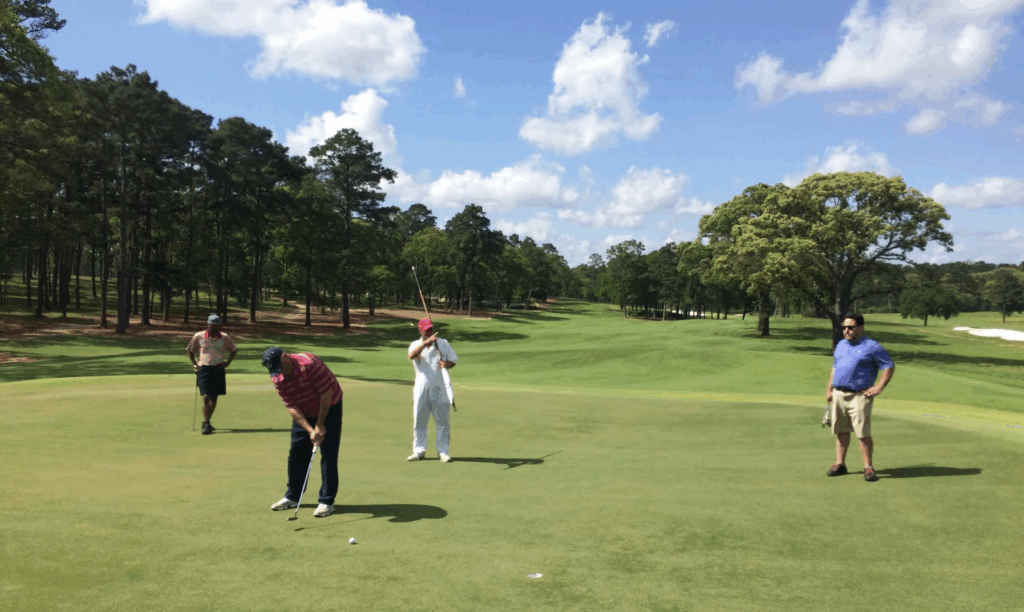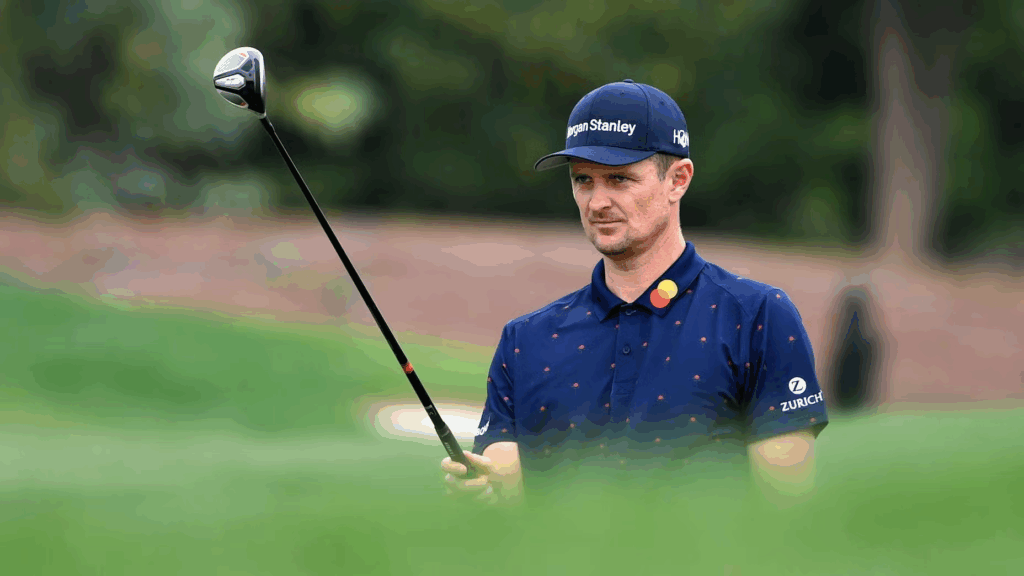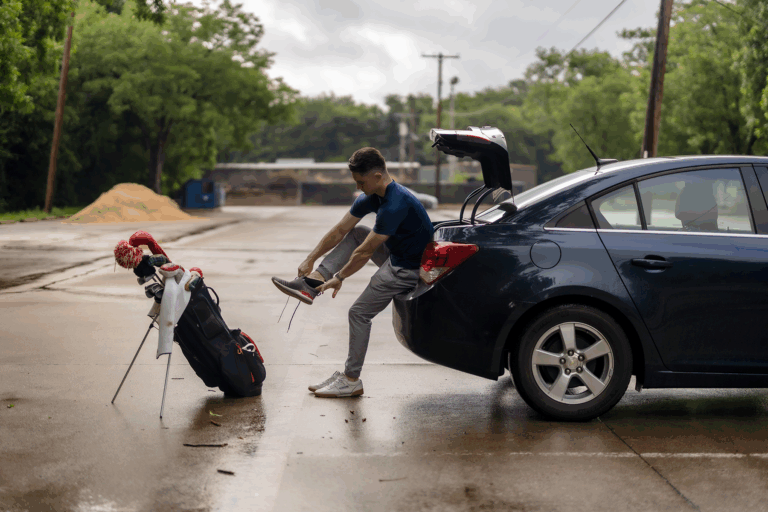The walk from the cart to the first tee can feel a lot longer than it looks—especially when there’s a group watching, the starter is eyeing you, and your playing partners are already talking about handicaps.
Even experienced golfers get the first tee jitters. It’s totally normal. But how you manage them can set the tone for your entire round.
Here’s how to calm the nerves, trust your swing, and start your round on the right foot.
Arrive Early (But Not Too Early)
Showing up at the last minute guarantees stress. You’re rushed, frazzled, and your body hasn’t had time to loosen up. Give yourself at least 30–45 minutes before your tee time to:
- Check in
- Stretch or warm up
- Hit a few putts and chips
- Take a few practice swings or range shots if available
That little bit of extra prep helps settle your mind and ease your body into the round—no surprises, no scrambling.
But don’t overdo it. If you’re standing around for an hour waiting to tee off, the nerves can creep back in. Aim for enough time to get comfortable but stay loose.
Keep the First Tee Simple
This isn’t the time to bust out a low launch, high-spin stinger or shape one into a tight corner. When the nerves are high, the key is to pick the most comfortable club and shot you’ve got.
That might be your 3-wood, a hybrid, or even a 7-iron—whatever helps you put the ball in play and get moving. Confidence breeds momentum, and there’s no rule that says you have to hit driver off the first tee.
Set yourself up for success, not heroics.
Take a Breath—Literally

The first tee jitters often show up as tight shoulders, shallow breathing, and a mind racing with everything except your swing.
Before you step in to hit, take one deep breath:
- In through your nose (slow and deep)
- Out through your mouth (steady and controlled)
This quick breath helps lower your heart rate, centers your mind, and gets oxygen flowing. It’s a simple trick, but one most players forget in the moment.
Use a Consistent Pre-Shot Routine
Your routine is your anchor. It brings structure, familiarity, and focus when everything around you feels a bit chaotic. Whether it’s a waggle, a deep breath, or a specific number of practice swings, stick to it.
By committing to your pre-shot routine, you tell your brain: I’ve been here before. I know what to do. That repetition builds confidence and helps block out distractions.
Don’t Worry About the Group Watching

Everyone feels like they’re under a microscope on the first tee. In reality? No one’s judging your swing—they’re all thinking about their own shot, their scorecard, or whether they remembered their rangefinder.
Even if you do hit a bad shot, so what? We’ve all been there. Laugh it off, drop another ball if you need to, and keep moving. Most golfers will respect your attitude way more than your swing.
Have a Go-To Warm-Up Swing
Before stepping into your actual shot, rehearse the swing you want to make. Not a big full-speed lash—just a smooth, balanced motion that matches the tempo and shape you’re aiming for.
This visual + feel connection helps get your body and brain in sync. If you’re trying to hit a draw, rehearse that feeling. If it’s a knockdown, mimic that tempo.
Give your body a preview of success, not just another practice swing.
Shift Your Focus to the Target

Nerves often pull your attention inward—swing thoughts, mechanics, what-ifs. Instead, shift your focus outward to your target. Pick a small spot in the fairway and commit to it.
Golf gets a lot easier when you aim at something instead of thinking about everything.
Smile and Keep It Light
Seriously. Smile. Laugh. Make a joke about the nerves. Tell your group, “Well, here goes nothing.” Taking the edge off with a little humor shows you’re relaxed—and that attitude is contagious.
Remember: you’re playing golf. You’re not on trial. You’re not on national TV. And the first tee shot is just one of dozens you’ll hit that day.
Final Thoughts
First tee nerves aren’t a problem—they’re proof that you care. But with a good routine, a simple strategy, and a little perspective, you can turn that adrenaline into something positive.
Everyone feels it. The best players just learn how to manage it and move forward. So next time you feel the heart rate rise and your hands go a little cold, take a breath, trust your routine, and swing away.
You’re one shot away from settling in.
